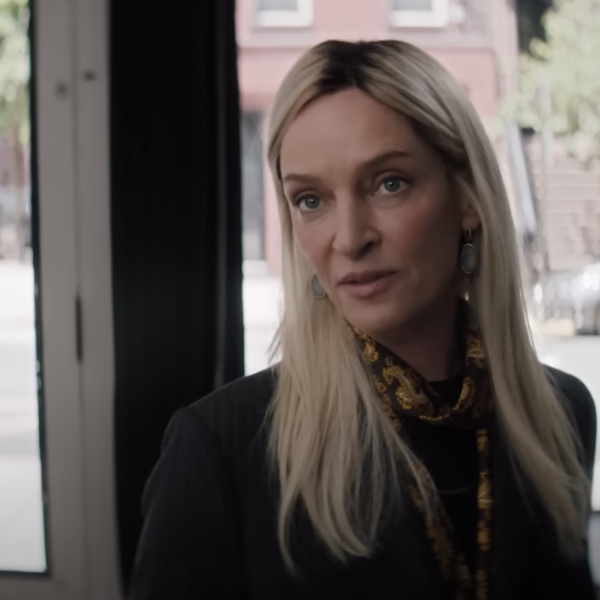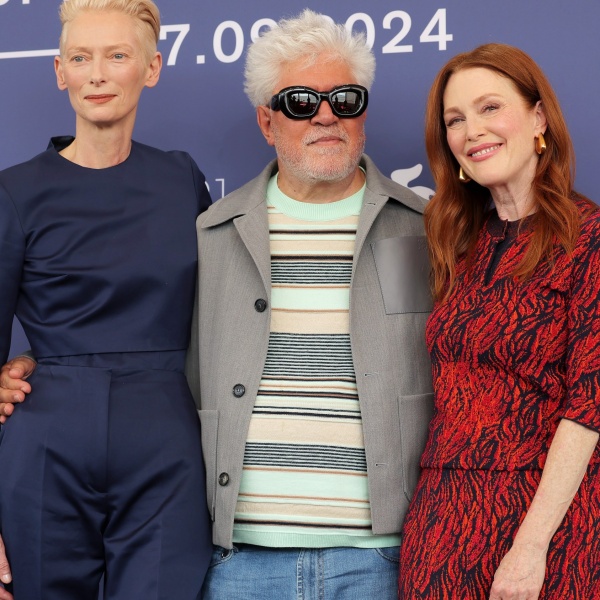Quincy Jones is dead at 91. There has simply never been an American artist better in touch with the pulse of popular culture than this producer, arranger, and composer whose work spanned nearly 70 years, every genre imaginable, and crossed all media as well. Jones is best known for his work producing Frank Sinatra and Michael Jackson, or his lifelong friendship with Ray Charles, but his film scores, bouncing with energy and groove, helped inspire a rethink of what was possible with movie music. (Associated Press first reported his death.)
Multiracial but the very definition of a 20th-century Black artist, Jones was born on the South Side of Chicago on March 14, 1933. His paternal grandmother was an ex-slave; his paternal grandfather, from Wales. His maternal grandmother was born a slave on a Kentucky plantation, as well — through the institutionalized rape of slavery, she was a distant relation of Tennessee Williams and the poet Sidney Lanier, and likely descended from French Huguenots who were court composers. Jones attributed part of his own musicianship to them.
That tapestry of backgrounds feeding into Jones’ own identity springs to mind the word most associated with Jones above all others: fusion. He could combine influences in his music like no one else. He opens his breathtaking 1970 jazz-rock album “Gula Matari” with an outright Gospel cover of Simon & Garfunkel’s “Bridge over Troubled Water.” And he’d pick up and retain influences throughout his life. Though a neighbor in Chicago who played stride piano later said the six-year-old Jones quickly became addicted to playing her piano himself, Jones would have to wait to be a teenager to pick up professional gigs: Famously, he introduced himself at 14 to Ray Charles, then 16, after watching him play at the Black Elks Club in Seattle, where the Jones family had moved following Quincy’s mother being institutionalized for a schizophrenic breakdown and his father remarrying. That friendship lasted until Charles’s death in 2004 — three years earlier, Charles paid tribute to Jones with the single best moment in the history of the Kennedy Center Honors, Charles’ rendition of “My Buddy” in Jones’s honor.
Before his teens were out, Jones had been offered a position playing trumpet and piano, as well as arranging, for Lionel Hampton, the legendary jazz vibraphonist. And sure enough on the title track of the “Gula Matari” album some 20 years later, you hear some vibraphone — how many jazz fusion artists in 1970 were still including vibraphone?
Jones kept what he absorbed, like a walking database of music history, and also served as a primary change agent of music history. His connections to what came before him are astonishing: After he toured with Hampton and started his own touring band and released his first album “Jazz Abroad,” recorded in Sweden in 1955, he studied with the famed music educator and composer Nadia Boulanger in Paris, who was a lifelong friend of Igor Stravinsky and also mentored Aaron Copland, Leonard Bernstein, Daniel Barenboim, and Philip Glass. Through Boulanger, there’s a direct line from “The Firebird” to “Thriller.” The unique space Jones occupied at the nexus of the concert hall, the jazz club, and the recording studio was given form.
In the mid-’60s, while beginning a collaboration with Frank Sinatra that set Ol’ Blue Eyes on the final victory-lap decades of his career (including his lush, titanic “Sinatra at the Sands” live album with the Count Basie Orchestra, the sound of Pax Americana), Jones began scoring movies. His debut as a film composer was Sidney Lumet’s 1965 Holocaust drama “The Pawnbroker,” followed quickly by his score for Sydney Pollack’s first feature “The Slender Thread,” as well as Cary Grant’s last movie “Walk Don’t Run.” Jazz scores had been created before Jones — think of Miles Davis’s score for “Elevator to the Gallows” or Duke Ellington’s for “Anatomy of a Murder” — but those could often center on moody solos or big-band bombast. Jones’s scores were silkier, slithering, serpentine. They burrowed into your brain and lived there. They weren’t necessarily meant to be listened to separately from the movies because they grooved so perfectly with the movies, like true accompaniment. The underlying menace of Norman Jewison’s Oscar-winner for best picture “In the Heat of the Night” or Richard Brooks’ “In Cold Blood” is unthinkable without Jones’s grooves. His music and the films themselves are a double helix of cinematic DNA that can’t be separated without undoing either. “The Italian Job,” “Bob & Carol & Ted & Alice,” “Cactus Flower,” “The Getaway”…. that’s an era-defining rundown of late ’60s cinema, all scored by Jones.
In the late ’70s, Jones embarked on his best-known collaboration with 20-year-old Michael Jackson, the protean pop prodigy who, over the next decade, would best harness Jones’s quicksilver arrangements. Disco is always undervalued as a genre, despite its long-form song structures flowing from jazz, funk, and soul, and, together, Jones and Jackson created an era-defining disco blast in the 1979 album “Off the Wall,” its lead single “Don’t Stop ’til You Get Enough” challenging radio airplay with its six-minute running time. They’d work together on two follow-up LPs that defined the ’80s as much as anything in American culture ever did: “Thriller” and “Bad.” It’s said that Jackson was so famous in the ’80s that more people around the world knew him than the president of the United States.
Those cascading first two synth notes of “Thriller”…. more famous than any other two notes in music history? It took Beethoven four notes for the knock-on-the-door opening thud of his 5th Symphony. How many other two notes can you instantly identify as being from one piece of music? One of the few others would have to be John Williams’s “Jaws” theme. You have to invoke movies to describe the sweep of Jones’s work with Jackson, it’s that cinematic, that likely to unfold in your mind like a big-screen spectacle.
You get an incredible insight into their working methods in Bao Nguyen’s 2024 documentary “The Greatest Night in Pop,” which shows how they marshaled dozens of the music industry’s top talents to create “We Are the World,” the pop anthem that raised money for famine relief via USA for Africa. Jones is something like a general, giving orders and telling his troops where to go and when to play their part; but he’s also a bit of a sonic painter too, knowing exactly what aural brushstrokes are needed to fill in every part of the record’s canvas. Jones signals exactly what they need where, an amazing bit of left-brain organizational clarity and focus, amid all this right-brain, airy talent on display. (Jackson, for his part, seems to get a bit lost there, ceding any other leadership to Lionel Richie.)
It was something that Jones attempted to replicate again in 2010 for a second “We Are the World,” one that benefited Haiti following the devastating earthquake there, and served as something of a catch-up to get talents involved who weren’t there the first time: Barbra Streisand, Tony Bennett, Brian Wilson. The first 55 years of Jones’s life were so prodigious, so game-changing that it could be hard for him in later years to do more than recreate his previous triumphs or revel in the shower of awards that greeted him. There was so much to revisit in his work to that time, he really didn’t need to produce much more — rediscovery of his work to date would be time-consuming enough for anyone who tried. He doesn’t actually have a producing credit on an LP after 1987, the year he and Jackson concluded their collaboration with “Bad.” But he had one final film score masterpiece, with his music for Steven Spielberg’s 1985 adaptation of “The Color Purple.”
He received three Academy Award nominations for that film, including for Best Picture, as a producer on the project (Jones was the one who hired Spielberg to direct), as well as for Best Original Score and Best Original Song (for “Miss Celie’s Blues”). In total, he’d earned seven nominations throughout his career, but never won any until the honorary Jean Hersholt award for his humanitarian work in 1995 — he was also slated to receive an honorary Academy Award this fall, which now will be given posthumously. He also won an Emmy for his score for “Roots” in 1978 and a Tony in 2016 for the Broadway musical revival of “The Color Purple.” And then there are the Grammys, 28 of which he won between 1964 and 2019, the third highest total ever for an artist behind “Ring Cycle” maestro Sir Georg Solti (with 31 Grammys) and all-time most awarded artist Beyoncé (with 32).
His last Grammy win came for his Netflix documentary he produced, “Quincy,” directed by Alan Hicks and his daughter Rashida Jones, in the category Best Music Film. This writer interviewed him on stage for BAFTA in New York City following a screening of the film. He had been in the news again all that year for an astonishing Q&A Jones gave New York Magazine in which he truly lived up to that idea of him as a musical nexus connecting all of pop culture for the past half century: He had bashed Paul McCartney’s guitar-playing (and the Beatles’ musicianship in general) in that interview and talked at length about his love life. What, if anything, new could I uncover in my 30-minute onstage Q&A with him? In the end, I realized that looking for saucy quotes from him wasn’t the point, and should never have been the point. He was an embodiment of living history whose presence we should all take inspiration from. Throughout our Q&A he took lusty bites of an apple he’d brought with him, and munched on it as he considered questions about working with Frank and Michael, and generally gave a vibe of “I don’t need to impress anybody here,” which everybody in attendance recognized as one-hundred percent accurate. And he did stand by his previous bashing of The Beatles.
Talking to him was like talking to your grandfather if your grandfather also happened to be possibly the most important figure in the music of the past half-century. Extremely approachable, but also in possession of an absolute confidence that meant he needed to prove nothing. And yet, something magical happened as we wrapped up. Sometimes at these Q&As, especially if the onstage talent is of an extra-superlative A-list tier or of an older age, and he certainly qualified as both, a moderator like myself will be instructed to tell the audience to remain in their seats until the talent has fully exited the stage. So I delivered that message, and Jones instantly wasn’t having any of it: He wanted to personally meet and greet as many members of the audience as he could. And he did. That moment is captured in the below video.
Jones shot me a sharp look like, “No, I’m doing this.” And so he stayed almost 20 minutes after his handlers had insisted to me he wrap. They knew as well as I at that point: Nothing could have dissuaded him. In the end, most of the BAFTA members there got to shake his hand and express a little of how much he meant to them. If I had done what his handlers had wanted, it would have shortchanged him his moment as well.
No one deserved to bask in the glow of adulation more.




